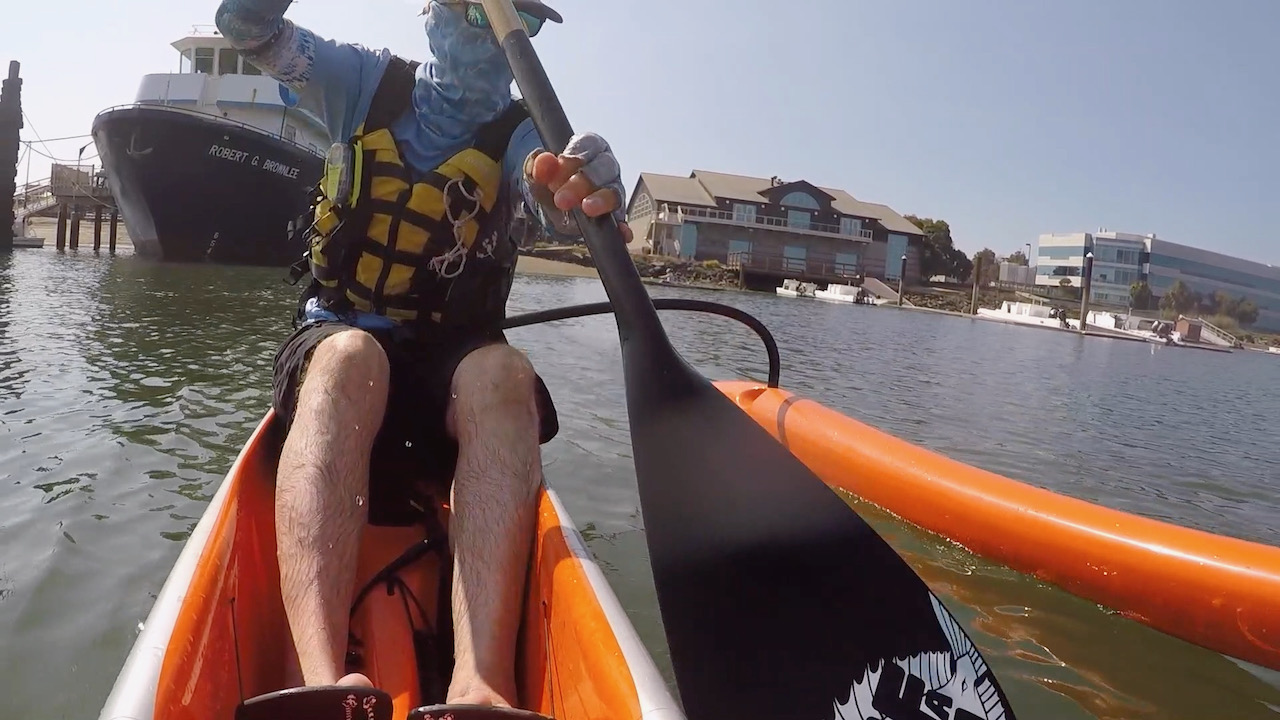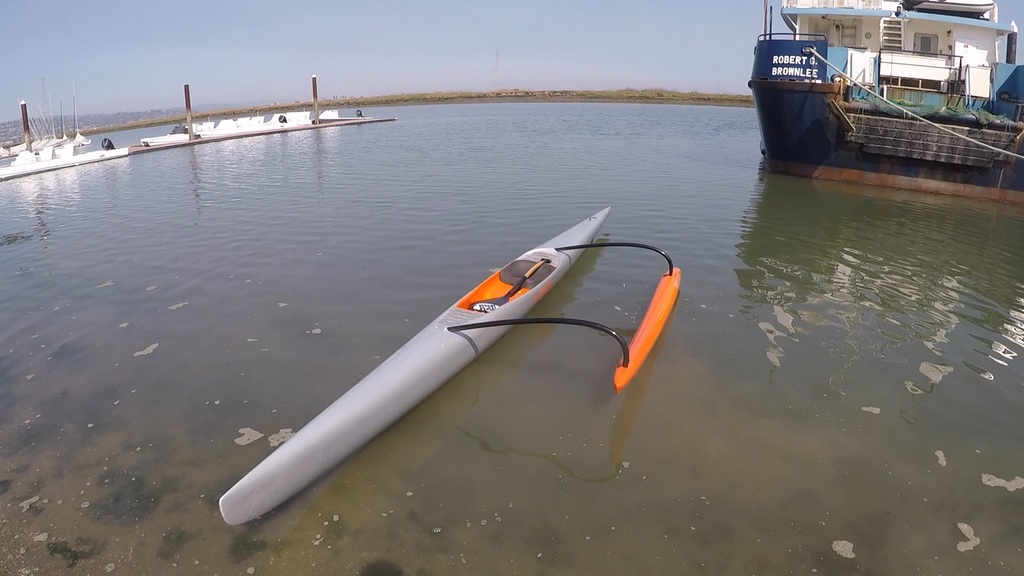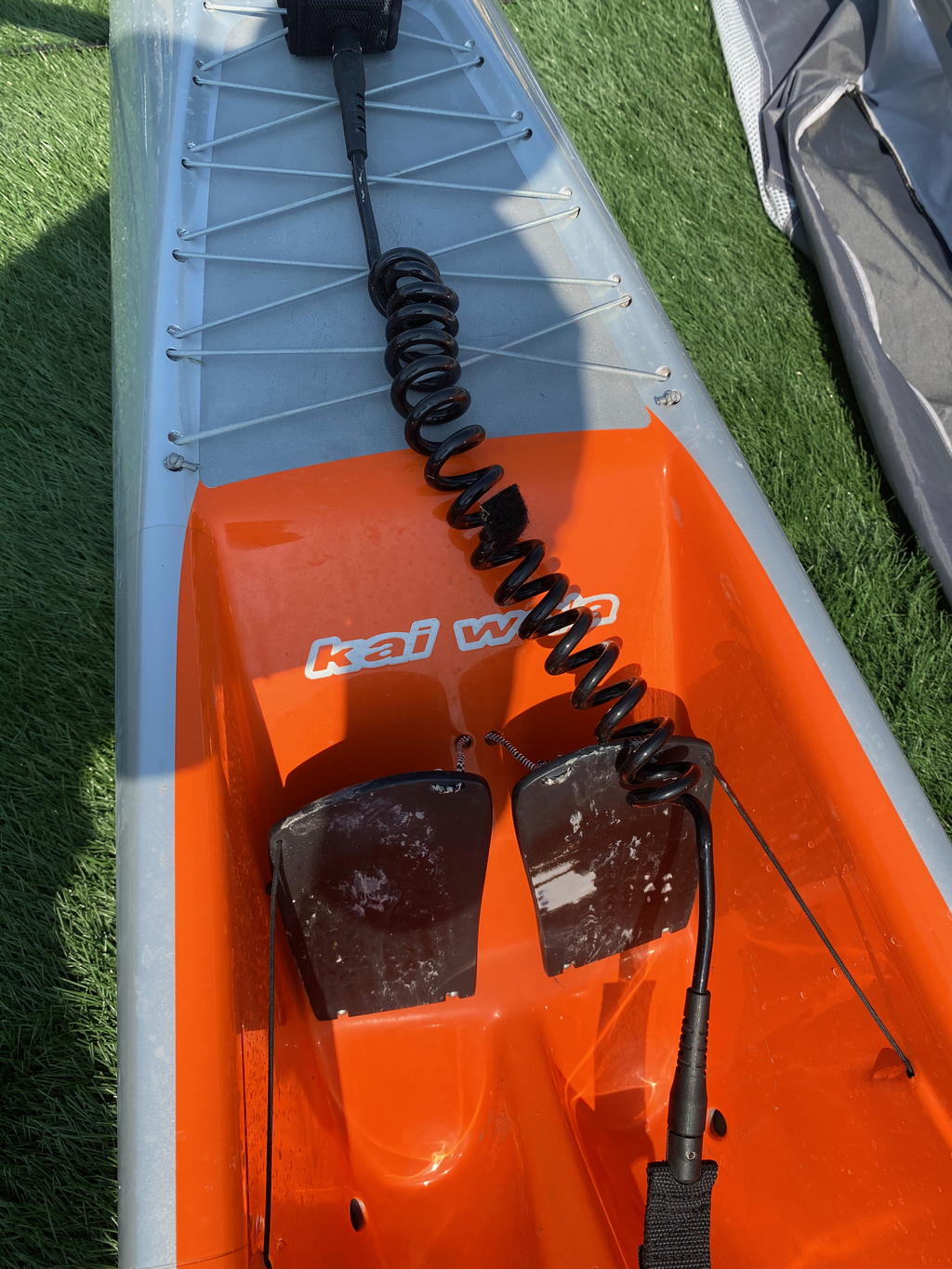We had to delay this event several times, the smoke from the California wild fires was just too much, but finally the day was here to meet Mike Lee for a test of the Ares outrigger canoe.
Posted on September 5, 2020
The Ares from Kai Wa'a, along with designs by Kamanu and Puakea, has been dominating the racing scene. In 2018 it took first place in the Kaiwi Solo – Molokai World Championship. as well as 3rd, 9th, 12th, 13th places. Kamanu's Pueo took about half of all top 40 finishes, while Puakea's Kahele finished in 4th and Puakea also occupied several more top 40 finishes.
Why would I care who paddles what in a race? The Molokai is the race when it comes to outrigger paddling, the one race everybody trains for and the only race that really matters, and when you want to know what type of designs top paddlers prefer this race provides great insights. The top boats of our times come from three Hawaiian brands, Kai Wa'a, Kamanu and Puakea, who also attract the best paddlers in the world to showcase their stuff.
As you can tell, the Ares is hot, super hot, and there's no used or second hand outrigger market where you can get your hands on any of them. In fact, in the entire San Francisco Bay Area, with all its outdoors and kayaking, surfing and boating outfits, there isn't a shop that sells one. However, I was lucky enough to connect with Mike Lee, a sales rep for Outrigger Zone, who had exactly one Ares model available for demo, his banged up personal boat.
I met with Mike at the Standford Rowing and Sailing Center on the shores of Redwood City. The Ares looked amazing in grey and orange (my colors, how did he know?) and weighed in at a mere 20 pounds; light as a feather when compared to my expedition grade sea kayaks. Mike took me through the different rigging possibilities and soon I was on the water. The video below captures a few impressions from my sea trials. When you watch it, keep in mind that I had never paddled an OC1 before, let alone such a thoroughbred racehorse of a canoe.
As I mentioned before, this canoe is extremely light, the layup is 100% carbon and that extends to the crossbars, also known as iakos, a word from the Hawaiian language. Quick segway: these boats, albeit made from modern materials, are not just recent inventions but come from a long lineage of predecessors, and the outrigger canoe is the quintessential Polynesian means of transport. In other words, we're entering Polynesian culture by taking an interest in an OC1. Iako will no remain the only new word we're adding to our vocabulary.
During the first part of my test I rigged the canoe heavy with the ama, that little pontoon providing additonal flotation on the port side of the craft while also providing a counterweight to rolling over to starboard, at the furthest distance from the main hull. There are two settings, closer or further away. The other rigging option I took to make this boat heavy on the ama side was moving the ama up to the highest setting which induces a slight tilt of the vessel to port side. This would be the most stable way to paddle the Ares. There are two settings for ama heights on either end, and one could combine them freely resulting in four possibilities for ama height adjustments. Add that to the two distance settings and in total we get 8 different rigging options for the ama alone. Furthermore, the seating position can be adjusted, and also the position of the foot paddles.
Even though the craft was rigged heavy it could definitely go over in a heartbeat. I started my session with some bracing tests to locate the tipping point. Going over, or huli as it is called in Polynesian, can occur for various reasons, for example by paddling on the starboard side and putting too much weight behind the paddle stroke. If you initiate a huli while paddling on portside there is virtually no way to stop the motion as you're crossing the point of no return. The paddle is on the wrong side to brace and fighting it may only lead to gear damage if not worse; you might as well roll with it.
I quickly settled in and found the Ares extremely comfortable to paddle. One of my tests was to sit side-saddle and rest my feet on the ama to simulate fishing from this boat. There you have it again, nobody in his right mind uses an OC1 for fishing, at least not in California, but I can't help it. If it floats I want to fish from it and if it races well it will take me out to my favorite offshore locations. My thoughts on the ama in the outward position was that it was a bit far away and not that comfortable. I could reach it but had to stretch.
Since I was turning pro after the first round I re-rigged the Ares by bringing the ama in. Everything else I left as before, I guess I wasn't quite the pro I'd like to be. The inward position made sitting in side-saddle much more comfortable and would bring prospective fishing gear into easier reach. There was still plenty of space to take a good paddle stroke on the port side, even with some of it occupied by fishing gear, and I thought that the craft was still stable even with the ama a few inches closer to the main hull.
Unlike sea kayaking, outrigger paddling provides a full body workout engaging all major muscle groups with each paddle stroke. Outrigger paddling also offers a dryer ride and a higher seating position which I found great to observe the environment and also to look into the water column. Without question, this was the most comfortable boat I ever paddled.
Another aspect of outrigger paddling I really like is that just about any person of any skill level can enjoy it without having to go through a steep learning curve. The rudder makes steering simple, the outrigger provides enough stability that a total beginner can immediately get on the water, and seating comfort and speed will make you smile.
As mentioned I have virtually no knowledge of the Polynesian paddle stroke and didn't attempt to put a lot of pressure behind the blade. And yet, on this calm day in flat water, I was gliding almost effortlessly at speeds between 5 and 6 mph with my highest speed at around 6.5 mph.
This first OC1 test was a big success in my book of paddling adventures and I want to learn more about the sport.
Fun fact: the theoretical hull speed of a 21 foot canoe is 6.2 knots or 7.1 mph


